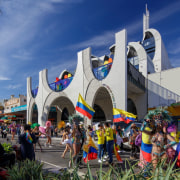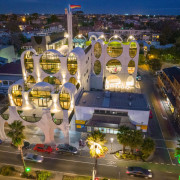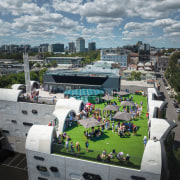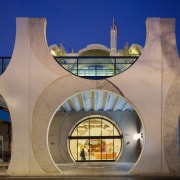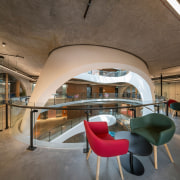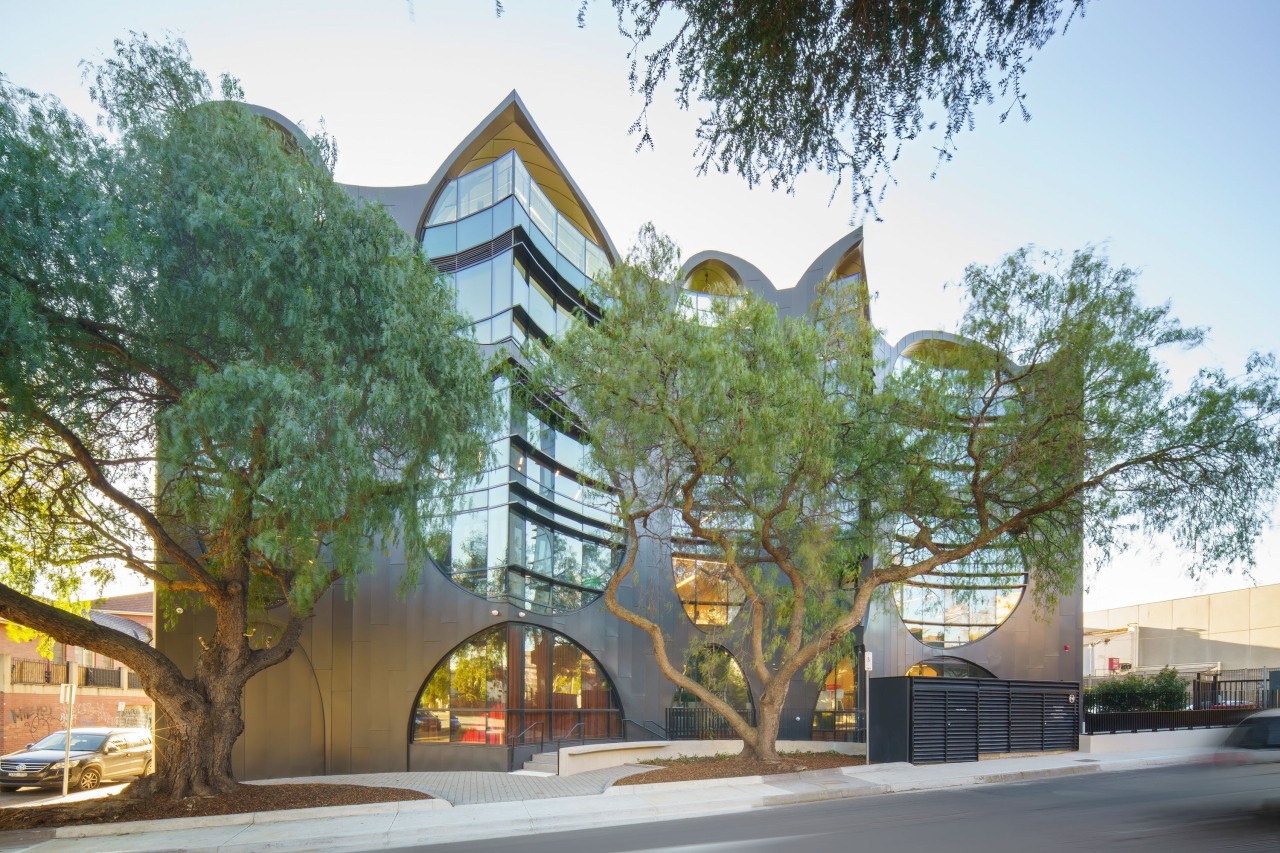Pride of place
Australia’s first purpose built LGBTQI+ centre – The Victorian Pride Centre, designed by BAU and GAA, cuts a distinctive form on the St Kilda skyline
Designed by Brearley Architects+Urbanists (BAU); Grant Amon Architects (GAA)
In 2017, a national survey in favour of marriage equality led to the Australian parliament passing the bill to legalise same-sex marriage, a milestone in the struggle for equality of the LGBTQI+ community.
The same year, the Victorian Price Centre (VPC), a not-for-profit organisation, received funding from the Victorian Government for Australia’s first purpose built LGBTQI+ centre and subsequently held an open architectural competition for the design of the centre in Fitzroy Street, St Kilda.
In January 2018 BAU and GAA were selected winners of the design competition.
The VPC houses numerous resident organisations and welcomes dozens of groups for meetings, events, and projects.
The building provides a public working hub, health and welfare centres, a bookshop, a theaterette, archives, a roof terrace, and a gallery.
Also planned were a café, rooftop events pavilion and community garden.
Augmenting the owners' excellent brief, BAU and GAA carried out workshops with user groups and the local indigenous community.
Consequent ambitions for the architecture included the creation of a profoundly welcoming and safe place; a significant landmark of Australia’s cultural progress; and flexible workshop spaces for driving campaigns of equity, liberty and inclusivity further.
Spirit of place and notions of becoming provided the conceptual frameworks for the design.
St Kilda’s queer history unites many LGBTQI+ communities.
Learning from St Kilda, the VPC includes and then abstracts cultural traditions of the exotic, the exuberant, the surreal, and the in-between.
The Fitzroy Street strip, the beach, the baths, Luna Park, Catani arch, Esplanade vaults, dance halls, and other histories, all inform this process.
A series of conceptual tubes emerge as an abstract armature that maximise the urban envelope; provide relevant and significant architectural forms and spaces; and generates an overarching order.
Most importantly, these conceptual tubes are then acted upon by extraction of the specifics of the brief; the more the internal program disrupts the tubes, the more the forms and spaces of a coexistence emerge.
These emergent and surprising outcomes embrace difference, diversity, and inclusion. The resultant sense of a constant becoming, of a work in-progress, embodies the ongoing struggle toward equity, freedom and fellowship.
The VPC aims to see beyond conventional uses and spaces, to challenge norms and hierarchies, to create a flexible and evolving program.
Circulation radiates from the atrium, which provides legibility, natural light, a performance stage, an informal amphitheatre, and a dynamic focus at the heart of the building.
Structural and non-structural fabric is clearly articulated, explaining what is permanent and what is easily changed.
The interiors combine raw structural concrete and exposed services with warm materiality including timber, coloured ceramics and velvet curtains – these coexistences further the notion of an aesthetics of inclusion.
Smaller tenancies in the building resemble laneway shopfronts.
A sacrificial timber framework integrated within these shop fronts along with hanging rails and track lighting above walls enable tenants to adapt and experiment with the spaces, enabling the emergence of an authentic self-expression.
Credit list
Project
Joint architects
Town planner
Quantity surveyor
Acoustic engineer
Building surveyor
Landscape contractor
Structural concept engineer
Architects
Owner
Project management
Structural engineer, mechanical engineer, hydraulic engineer, electrical engineer, facade engineer, traffic engineer, fire services, fire engineer
ESD consultant
Landscape architect
Lighting consultant
Suppliers
Designed by: Brearley Architects+Urbanists (BAU) working
Story by: Trendsideas
Photography by: John-Gollings; diagram – BAU
Home kitchen bathroom commercial design
Diving into nature
Classic looks, contemporary efficiency
Personality plus

